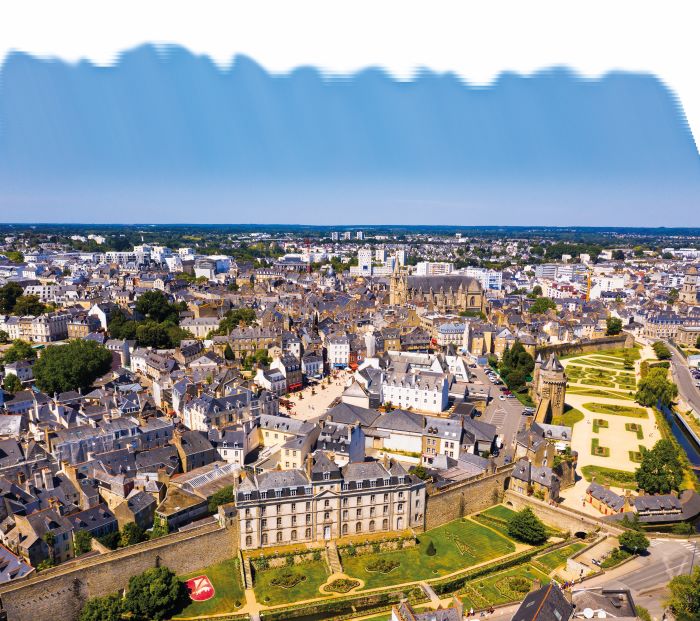Discover Vannes: the ideal Breton city
[ad_1]
Quaint half-timbered buildings, modern boutiques, bustling harbor cafes and beautiful islands – Annalisa Davis explains why Vannes is the perfect Breton town.
If you want a town in Brittany that sums up the spirit and the beauty of this region, Vannes is a crush. It offers the rich cultural heritage associated with northwestern France, a chic port that brings the sea to the city center, a vibrant student population, as well as a sense of historic elegance. Once visited, Vannes is never forgotten.
ARCHITECTURAL TREASURES
The city owes its name to the Veneto, a Celtic tribe who traded regularly with Great Britain and who chose Vannes for its location at the mouths of two rivers and the easy access from here to the open seas. Although the Venetians were defeated by the Romans in 56 BC, Vannes itself continued to prosper, largely thanks to its port.
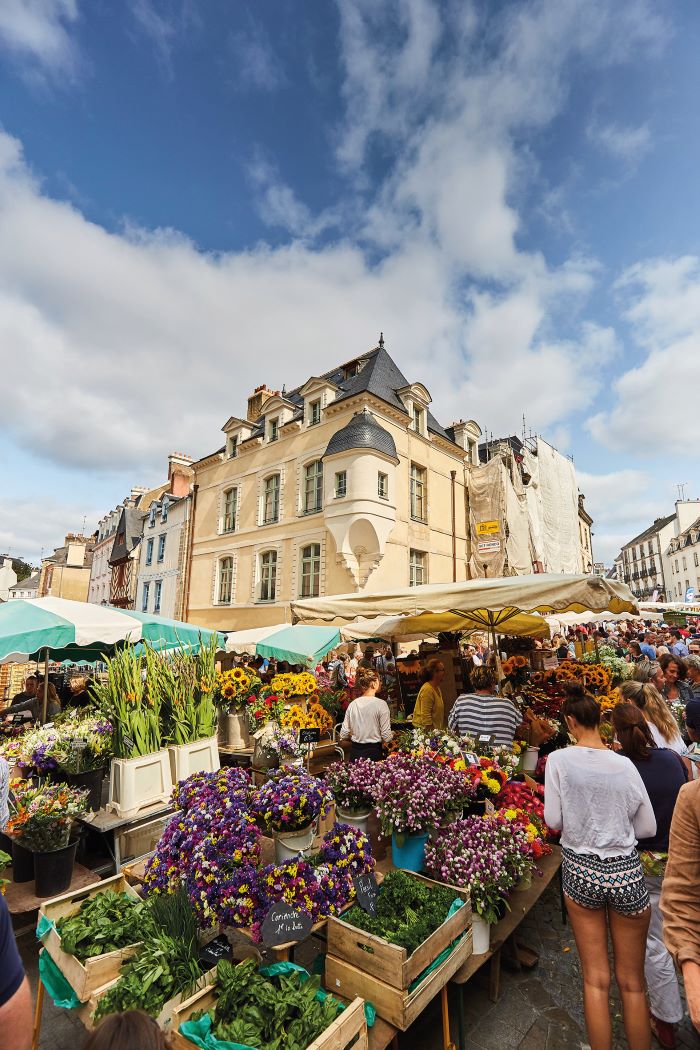
It seems that Vannes acquired its status as a cathedral city as early as the 5th century, with several additional buildings during the 7th and 8th centuries. A quick glance at all the pictures of Vannes, however, will tell you that its heyday came in the Middle Ages, as the city flourished and wooden buildings began to line the cobbled streets. At that time, wood was the easiest material to find and transport, coming from the vast forests on the outskirts of the city.
The streets of Vannes are full of medieval half-timbered buildings but, unlike their English counterparts, they are cheerfully painted in blues, greens, ochres and reds. The result is a colorful crowd of very particular personalities who make the character of Vannes and are immediately recognizable: the place Henri IV, the rue Saint-Salomon and the rue des Chanoines are fine examples.
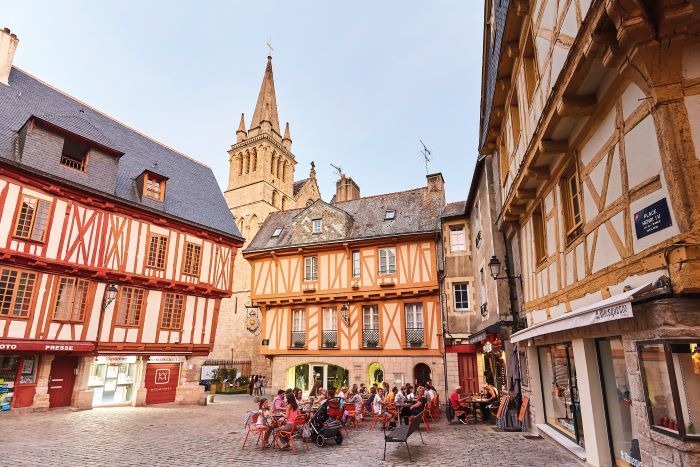
Look upwards as you explore and you’ll notice that many of these structures seem to grow larger as they rise – but that’s not an optical illusion. This is called “corbelledâ€, with upper floors extending out onto the street, creating sheltered aisles in front of the shops that would have occupied the ground floor space. These ancient buildings almost seem to have leaned further and further forward with each passing decade, like curious onlookers pouncing on themselves to watch the strolling visitors.
And if you feel observed, it may be thanks to the different sculpted figures that look out from the facades. One of the most famous monuments in the center is known as “Vannes et sa femme” (Vannes and his wife). Adorning a 16th-century half-timbered building at the junction of rue du Bienheureux-Pierre-René Rogue and rue Noé, this cheerful stone sculpture probably served as a sign for the merchant who once stood at this corner a few years ago. several centuries. As you continue to explore, following the original cobbled streets and alleys, you might suddenly be surprised by the expansive 15th-century cathedral which is modestly nestled between other buildings.
Saint-Pierre Cathedral is a unique blend of architectural styles, from the Gothic Revival facade to the 15th century nave, including the 16th century chapel and Renaissance style rotunda.
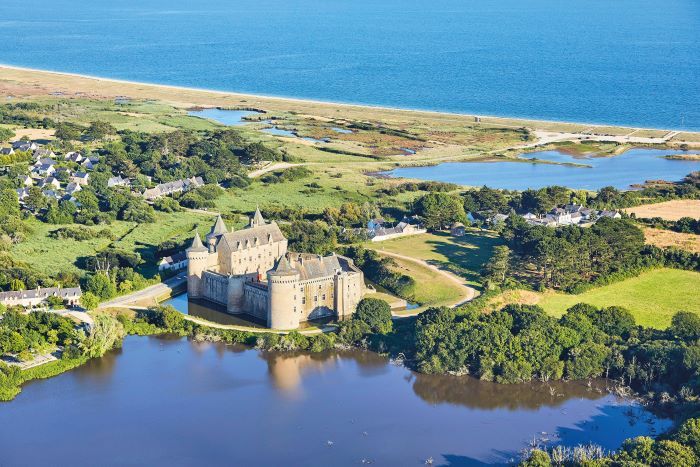
In the 1300s, Vannes was one of the most important towns in Brittany, and Duke John IV (1365-1399) decided to extend the impressive ramparts to enclose nearly 25 hectares within the city walls, as well than to build the Château de l’Hermine to house the Dukes of Brittany, until 1458 when they were transferred to Nantes. The original castle of Vannes finally fell into ruin; in 1697, Louis XIV donated the ruins to the city, and its stones were reused to repair other structures in the city and build the harbor docks. In 1798, the remains were demolished by an entrepreneur, Julien Lagorce, who built a hotel-restaurant on the site. Even though the current structure is the Hotel Lagorce, the locals still call it the Château de l’Hermine. To get a feel for the grandeur of the original castle, visit the Constable’s Tower, which dates from the early 1400s and remains a beautiful piece of architecture. This tower once housed the “Constable†– the armies of the Dukes of Brittany – and even became a prison during the French Revolution. Despite its combative history, it offers stunning and breathtaking views of the city skyline and is now home to a fascinating list of cultural exhibits.
In sharp contrast to medieval architecture, the Town Hall of Vannes is a glorious example of neo-Renaissance symmetry, with columns, a marble staircase and a vast reception area. Dating from the 1880s, it embodies French architectural elegance and stands out as an imposing symbol of municipal power.
HERITAGE WALKS
On your first visit to this beautiful town, there is a good chance you will miss the castle ramparts and impressive gardens that line the side of town that slopes down to the harbor. Frequently used as an event venue in the summer, these gardens are free to explore and provide generous space to relax, enjoy the shade, or just stroll down to the harbor. As you pass from the gardens to the port, look for the La Garenne washhouse where the inhabitants washed their laundry in the Marle river. It dates from 1817 but looks old and it is a beautifully photogenic place. Check with the tourist office for the route from Porte Saint-Vincent to Porte Saint-Jean, and enjoy a heritage walk of less than 1 km which will take less than an hour but will offer ‘endless photo opportunities along the way.
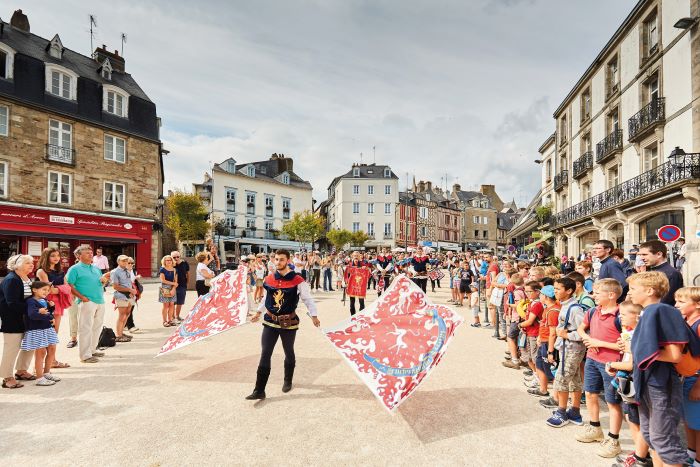
CULTURE AND SHOPPING
In the heart of Vannes you will find an entertaining variety of shops, not only the national chains you would expect, but also several independent boutiques, often tucked away in the side streets and winding alleys, so it is worth the time to spend some time to find yourself. to lose.
It is a creative city, with the CréalOuest craft market on Sundays in summer and Les Nocturnes des Artisans every Friday evening in July and August, when the craft stalls line the port.
There are also two museums in Vannes: Chateau Gaillard is a 15th century mansion and now houses the Archaeological Museum, but the most famous is La Cohue, dating from the 13th century. In medieval France, “cohue” was the name of a market place, and, over the centuries, this building served as a market, the duke’s courtrooms, a court of justice and even a Breton parliament. 1675 to 1689. Nowadays it is the Museum of Fine Arts, a generous stone exhibition space with ancient arches and a fabulous atmosphere.
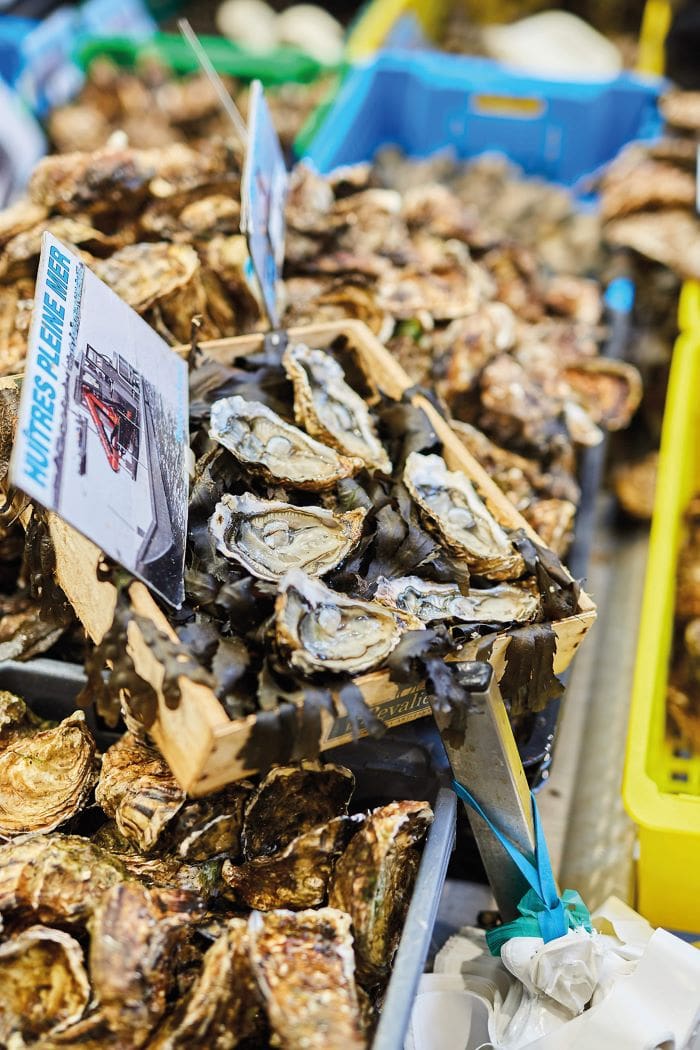
A CITY FOR SEA PEOPLE
One cannot separate Vannes from the omnipresent sea, source of its prosperity in the Middle Ages, and still a leading tourist attraction today. The marina is the perfect place for people-watching, especially from the curving line of sidewalk cafes that serve as front row seats and offer everything for hungry travelers, from swanky French cuisine to good student dishes. market and merry and with ice cream cones. Sit down, watch the floating boats, sip an aperitif and if you have the energy, walk along the quays for 3.6 km to discover Conleau Island (or there are shuttles if you prefer not to walk! ). This “almost island†is connected to the mainland by a walkway but certainly retains an island feel, with its own small beach, shady trees, and lido-style saltwater pool. For a taste of the Atlantic, foodies will enjoy local seafood: oysters, mussels, fresh fish, scampi, crab and lobster are widely available, although you may need to book in advance for the platter. full seafood. Try the Restaurant de Roscanvec, the Restaurant L’Eden, or the charming Chez la Mère 6 Sous and bring the sea on your plate!
Of course, you cannot describe Vannes without mentioning the magnificent archipelago of the surrounding islands, the Glénan Archipelago. In summer, the turquoise waters dotted with tiny islands resemble a tropical paradise, where you can scuba dive, kayak, paddle or cruise on a glass-bottom boat. Pack a picnic, take a boat ride, and stop at Saint-Nicolas for long beaches of fine sand, crystal-clear water, and pure relaxation.
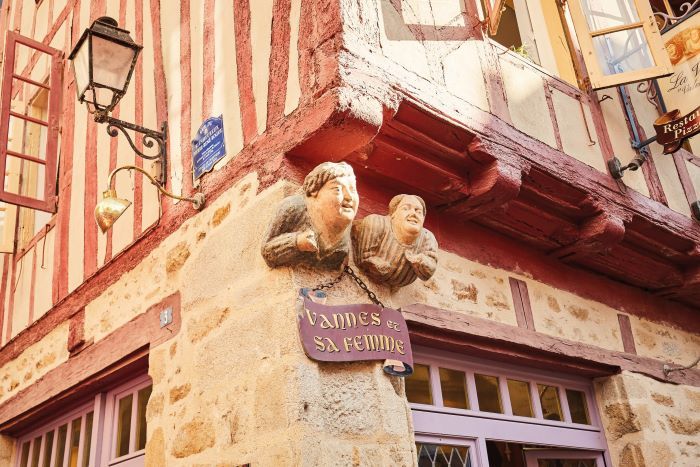
THE ESSENTIAL VALVES EXPERIENCES
Lack of time ? Discover our selection of the best Vannes products.
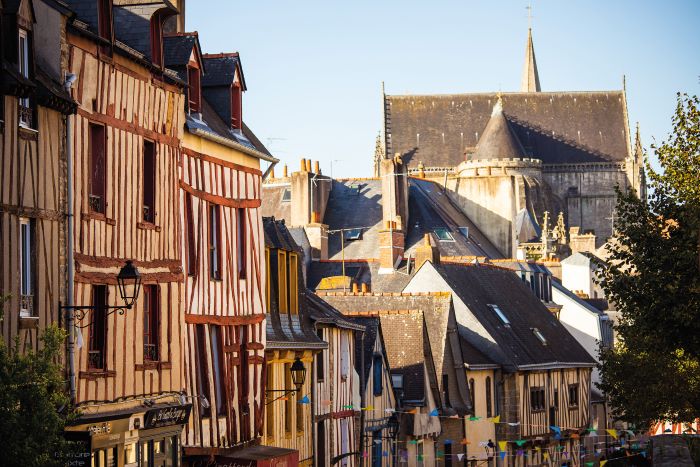
IMMERSE YOURSELF IN HISTORY
Whether you follow a route suggested by the tourist office or just follow your nose, give yourself time to explore the different architectural periods of this city: the medieval half-timberings, the decorative stone sculptures, the meandering alleys. cobblestone and the Renaissance Splendor of later buildings in the city.
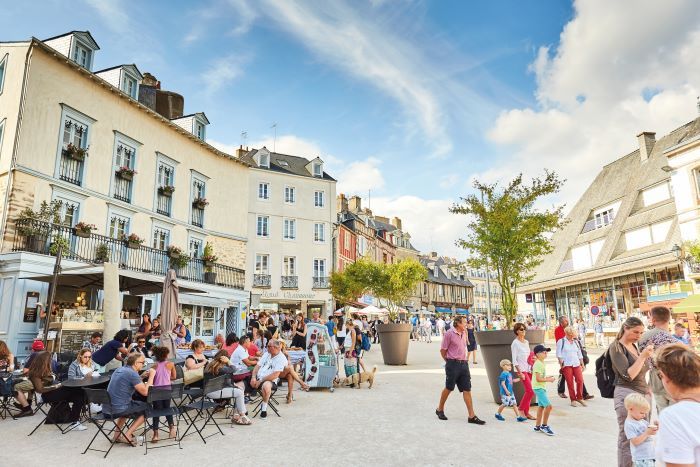
PEOPLE WATCH AT THE PORT
It is a discreet pleasure, to linger in a magnificent setting, to watch the world go by and to enjoy the French tradition of ‘a drink on the terrace“… In fact, it’s almost a compulsory activity in Vannes, so it would be rude not to do it.
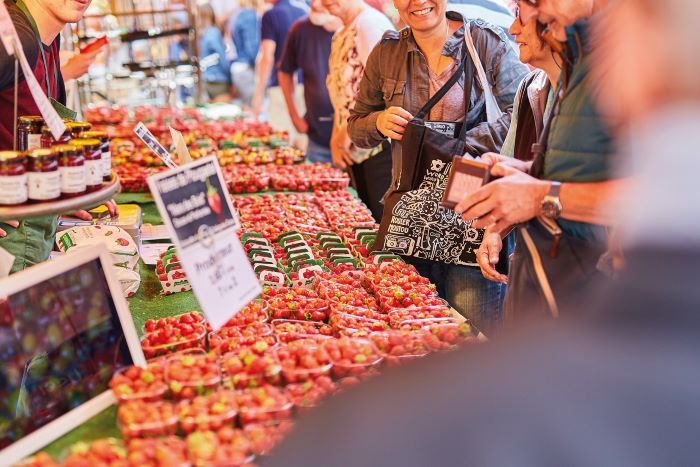
FRESH MARKETS AND PRODUCTS
For the most authentic outdoor experience, aim for Wednesday or Saturday morning and peruse the bright stalls of fruits, vegetables, fish, flowers and fresh bread. The other mornings, go to the covered market in the Halles des Lices (place des Lices) and the fish market in the place de la Poissonnerie, and create your own menu!
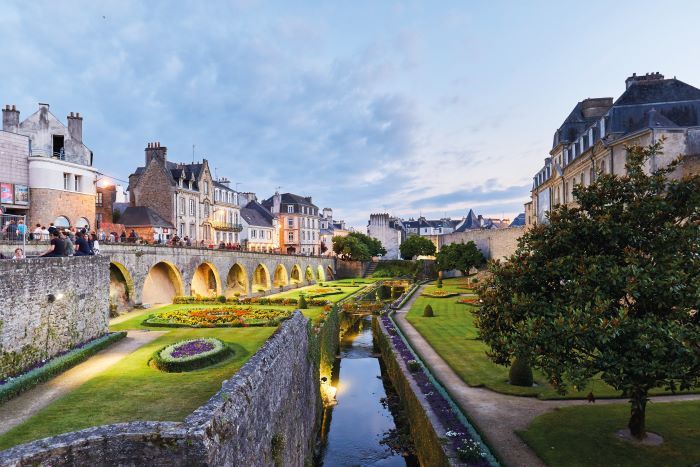
LIVE MUSIC IN THE GARDENS
Even if you are not there during the Summer Jazz Festival, you are sure to hear live music in Vannes, especially in the Jardins des Remparts.
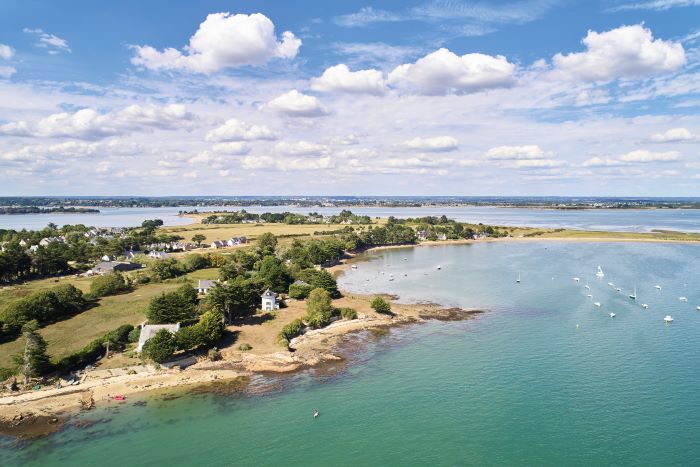
ENJOY THE ISLAND LIFE
Whether you are taking a walk on Conleau Island or taking a boat trip to fully experience the Glénan archipelago, you absolutely must see the islands during your stay in Vannes. Their Caribbean-style space provides a breathtaking counterpoint to the cozy and historic downtown.
From France Today magazine
[ad_2]

